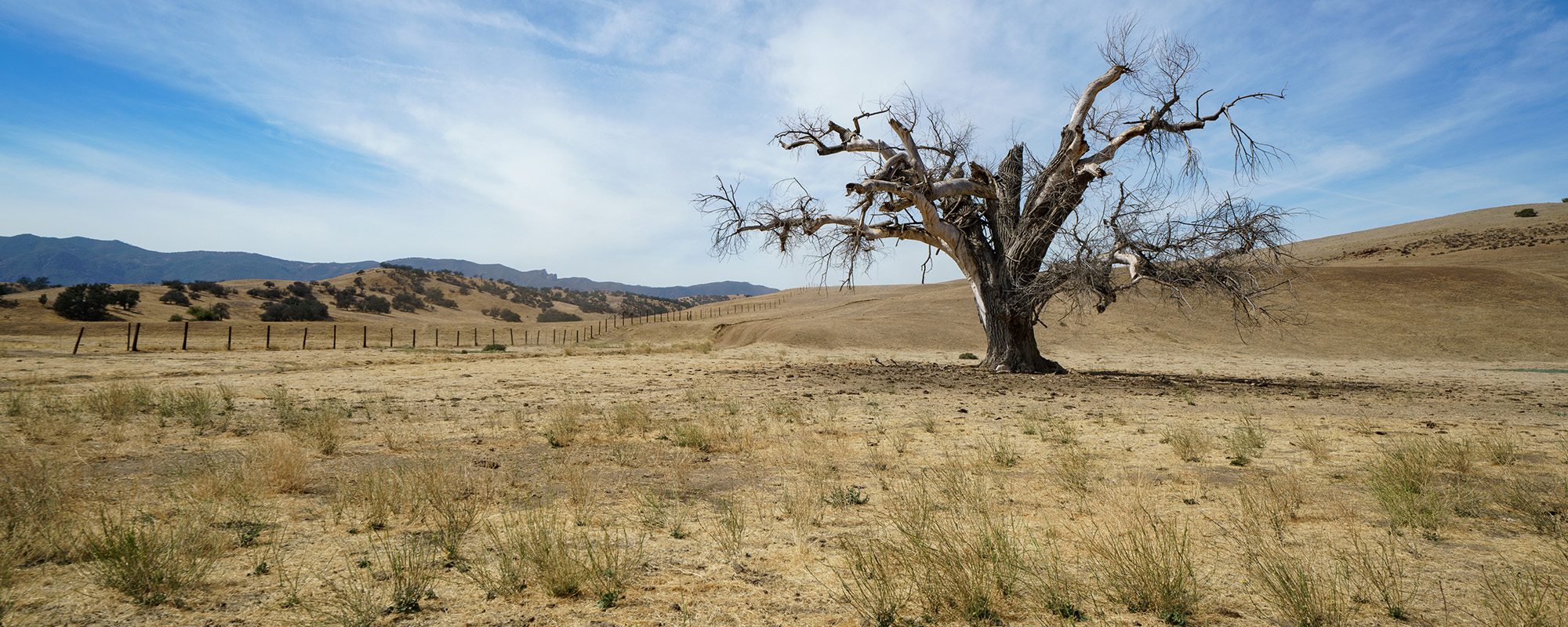California Drought Series: Episode 2
California’s Agricultural Impact & How the Drought Affects Our Nation
Home to over 43 million acres of agricultural land, California is our nation’s largest producer of agricultural products.
According to the most recent Census of Agriculture conducted by the US Department of Agriculture, California accounts for 11 percent of the nation's total agricultural sales. Our Golden State's bounty includes dairy products, beef, produce such as lettuce, tomatoes and strawberries, as well as high-value specialties such as almonds, walnuts, pistachios, and grapes. By volume, California provides one-third of the nation's vegetables and two-thirds of its nuts.
California’s farmers and ranchers are the keepers of a life-sustaining, economy-boosting natural resource, upon which our entire nation depends. As the drought forces them to monetize their water resources and let their fields to fallow in the name of survival, the consequences are felt not only here at home, but nation-wide.
How the Drought is Affecting California’s Agricultural Production
According to the National Integrated Drought Information System, the cost of drought events averages over $9 billion per year making it a serious hazard with substantial socioeconomic consequences.
As a powerhouse producer for the nation boasting a $50 billion agricultural sector, when drought hits California the consequences (and costs) are drastic.
In 2015 alone, drought impacts to California’s agricultural sector resulted in $1.84 billion in direct costs, a loss of 10,100 seasonal jobs, and surface water shortages of 8.7 million acre-feet.
The primary cause for these economic losses? Crop failure and pasture loss. As drought reduces both water availability and quality, farmers and ranchers are unable to sustain production of their lands and our food supply dips as a result. Farmers’ lands are destroyed, ranchers sell off livestock, and demand begins to outweigh supply causing costs to rise in grocery stores. These rising costs in turn make healthy, home-grown produce scarce and inaccessible to an increasing number of people.
But rising costs may not be the only thing you notice at the grocery store. In addition to causing a dip in the food supply, drought causes a shortage of some of our favorite specialty crops. As water becomes scarcer and more expensive, farmers are forced to shut down portions of their productive land making it necessary to allocate their remaining resources to crops that deliver higher profits in order to keep their operations afloat. Tree crops like almonds, avocados, peaches, citrus, and others are among the most profitable per drop of water. While these high-value items may become more plentiful, the variety of commodities that California brings to the nation will likely decrease.
The reduced availability and quality of water further affects us in the form of water restrictions and water-use fees. Both of which affect farmers and ranchers disproportionately. In situations of prolonged drought (as we are in) where temperatures are rising, groundwater is diminishing at alarming rates, and reservoirs are lower than ever, the future of agriculture in California is uncertain, but it’s clear that plans and policies are needed to protect our most precious natural resources: water and land.
How do we Keep California a Primary Agricultural Producer?
One of the most important things we can do to ensure California remains a huge agricultural provider for our country is to preserve the farm and ranch land that we have and make sure it stays farm and ranch land in the future.
To do just that, land conservation organizations work with willing farmers and ranchers to ensure their land will remain ag land forever. The owner and land conservation team work together to place legal protections on their properties, called easements, that require the land remain a ranch or farm.
Another key component in preparing and strengthening the resilience of our agricultural sector to drought is the Drought Early Warning System. Composed of 5 key components, 1) drought observation and monitoring; (2) drought planning and preparedness; (3) prediction and forecasting of drought; (4) communication and outreach to the public and affected sectors; and (5) interdisciplinary and applied research on topics of concern to drought-affected sectors, this warning system is a vital educational component that helps farmers and ranchers navigate ever-changing and difficult circumstances.
Perhaps more important than conserving ranches and farms or continuing educational preparedness, the ultimate goal for us as a nation is to develop and inspire new appreciation of California’s land as an inherently valuable natural resource to be appreciated and safeguarded.
Our very own Pete Clark, 5th generation California rancher and Real Estate Broker here at Clark Company says it best: “The impacts of California’ s ongoing drought extends far beyond our borders, and should serve as a wake-up call for the entire nation. Productive land and its bounty is the backbone of our nation’s health, wealth and security. With that in mind, it is incumbent that everyone understand the relevance of agriculture to our daily lives and measure its value in ecological terms as well as market terms. We must conserve agricultural lands’ powerful productivity if we are not only going to survive, but thrive in the 21st Century.”

